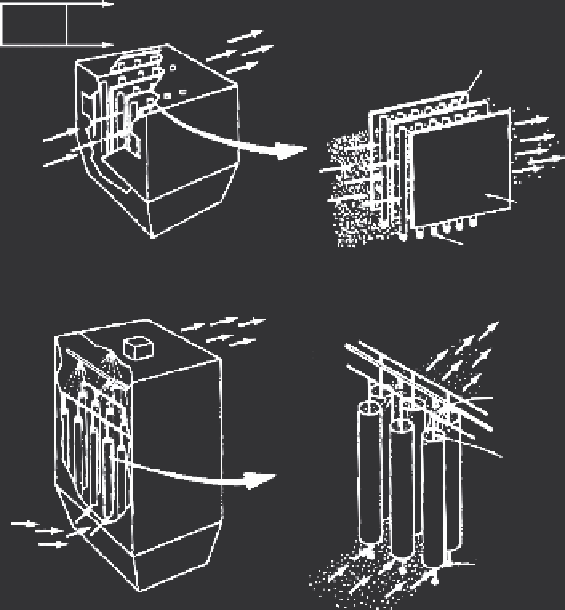Geoscience Reference
In-Depth Information
To plates
High
voltage
Clean
gas out
To wires
Discharge
electrode (wire)
Clean
gas out
Dirty
gas in
Dirty
gas in
Collection
plate
Weights
(A)
Clean
gas out
Clean
gas out
Spary
Discharge
electrode
(wire)
Dirty
gas in
Dirty
gas in
Weights
(B)
FIGURE 17.7
Typical simple fabric filter baghouse design. (From USEPA,
Control Techniques for Gases
and Particulates
, U.S. Environmental Protection Agency, Washington, DC, 1971.)
Migration velocity is quite sensitive to the voltage, because the electric field appears twice in
Equation 17.20. Therefore, the precipitator must be designed using the maximum electric field for
maximum collection efficiency. The migration velocity is also dependent on particle size; larger
particles are collected more easily than smaller ones. Particle migration velocity can also be deter-
mined by the following equation:
qE
p
w
=
(17.21)
4πµ
r
where
w
= Migration velocity.
q
= Particle charge (charges).
E
p
= Strength of field in which particles are collected, volts per meter (normally the field close
to the collecting plates).
µ = Viscosity of gas (Pa-s).
r
= Radius of the particle (µm).
The
Deutsch-Anderson
equation
or derivatives thereof are used extensively throughout the pre-
cipitator industry. Specifically, it has been used to determine the collection efficiency of the precipi-
tator under ideal conditions. Though scientifically valid, there is a number of operating parameters
that can cause the results to be in error by a factor of two of more. Therefore, this equation should

Search WWH ::

Custom Search